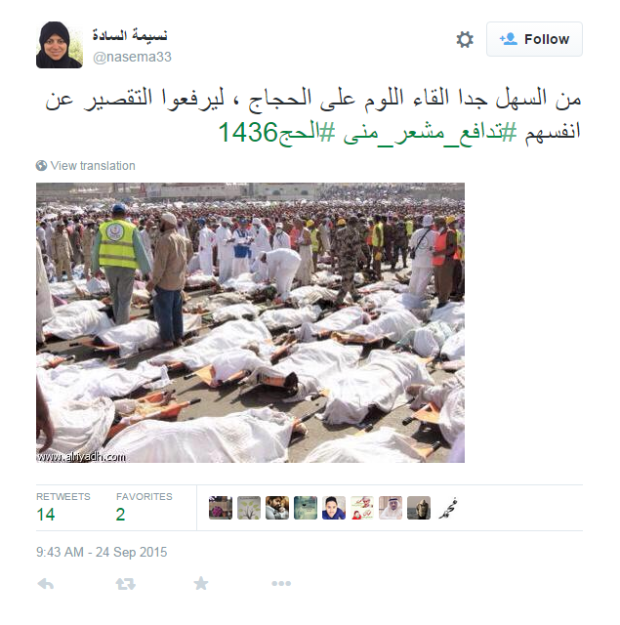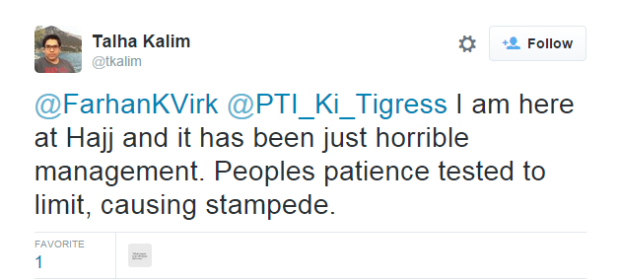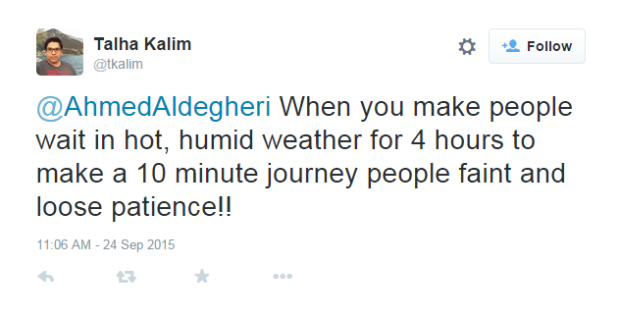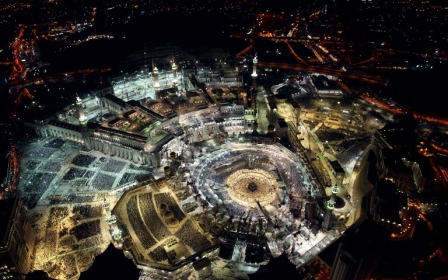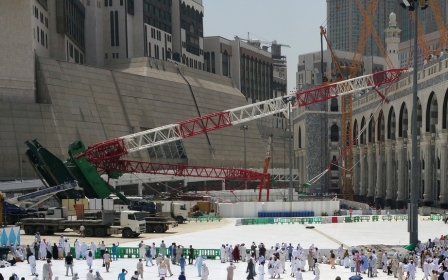Over 700 dead, 860 hurt in stampede at Hajj in Saudi

At least 717 people were killed and 863 others hurt in a stampede at Hajj in Saudi Arabia, civil defence officials said on Thursday, making it the worst disaster to hit the Islamic pilgrimage in 25 years.
The deaths were a result of crush injuries during a stampede in Mina, about four miles outside of Mecca, according to official statements relayed on Saudi state television.
The crush reportedly occurred near Jamarat Bridge, a pedestrian bridge where pilgrims stand to throw stones at a wall representing the devil to purge themselves of sin.
The incident began at around 09:00 local time (06:00 GMT) as huge crowds of pilgrims rushed in to take part in the ceremony.
Mohammed, a pilgrim who spoke to Saudi news site al-Bayan, said the crush took the crowds completely by surprise.
"As we were walking towards Jamarat Bridge, the group of pilgrims suddenly stopped walking. I don't know why, it was very strange.
"Within a few minutes waves of pilgrims had pushed in from the back - then there was a huge stampede. Women started screaming loudly, and elderly people were falling on the ground."
Mohammed told the site he was injured when he was trampled by other pilgrims, and was receiving treatment at the scene.
Video that emerged from the aftermath of the crush showed the ground strewn with injured people anid frantic rescue efforts.
The civil defence service said 4,000 people took part in attempts to help the wounded, along with 220 ambulances.
The reason for the disaster remains unclear, but the high death toll will raise questions about how authorities handled the huge crowds of people anxious to complete the pilgrimage rites before sunset tonight.
The security services said they would release a statement after evening prayers on Thursday which would clarify "all the details of the incident".
The Crown Prince Mohammed bin Nayef has ordered the formation of a higher committee of inquiry to investigate the incident and its causes. The results will be forwarded to the Saudi monarch King Salman bin Abdel Aziz.
In the meantime, though, Saudi officials announced various theories as to why this year's stoning ceremony went so tragically wrong.
The head of the Saudi Hajj Committee, Prince Khaled al-Faisal, blamed "some pilgrims from African nationalities," according to the Saudi-owned al-Arabiya television channel.
Saudi Health Minister Khaled al-Falih also blamed pilgrims for the disaster, saying it would not have happened if they had "followed instructions".
"Many pilgrims move without respecting the timetables," Faisal told al-Ekhbariya TV station, saying this was the "principal reason for the accident".
Hajj organisers come under fire
In 2006, at least 345 pilgrims were killed and 1,000 injured in Mina when they were reportedly tripped up by luggage and then crushed by the crowd behind them.
After that incident Jamarat Bridge, originally constructed in 1963, was demolished, and a new, multi-level bridge was built by the Bin Laden Group, a multimillion dollar construction company originally set up by Osama Bin Laden's father.
The same group was also responsible for building a crane that collapsed in the holy city of Mecca during heavy winds earlier this month, killing 107 pilgrims.
Members of the group were placed under a travel ban following the disaster, and authorities said the company would not be given any more projects.
The group has denied any responsibility for the incident, with an engineer for the company reporting calling the collapse "an act of God".
Thursday's disaster is the first to occur at the location since the new bridge was completed in 2006.
Other attempts have since been made to implement crowd controls measures at the bridge, where up to a million people can pour it an any one time during the stoning ceremony.
Translation: We thought these stampedes would never happen again after entrance to and exit from the bridge were reorganised. What is the problem, and how did this grievous event happen?
An official statement released by the Ministry of Defence, as rescue efforts continued, said the deaths and injuries occurred when "there was a sudden rise in the intensity of [the numbers of] pilgrims heading towards Jamarat Bridge".
Some commenters, though, accused authorities of trying to shift the blame onto pilgrims, suggesting that security services could have done more to control the crowds.
Translation: It is very easy [for the authorities] to shift the blame onto pilgrims to deflect criticism from themselves Iran, Saudi Arabia's long-time foe, waded into the debate on Thursday afternoon after at least 43 of its citizens were found to have died in the crush.The head of Iran's Hajj body, Said Ohadi, told Iranian state television that the stampede was caused by a decision to close a path near the stoning site "for unknown reasons".
"This caused the tragic incident," he said. Saudi authorities have yet to respond to the criticism.
Other fatal stampedes in Mina occured in 2004, 2001, 1994 and 1990 killing more than 2,000 pilgrims in total, according to reports.
Middle East Eye propose une couverture et une analyse indépendantes et incomparables du Moyen-Orient, de l’Afrique du Nord et d’autres régions du monde. Pour en savoir plus sur la reprise de ce contenu et les frais qui s’appliquent, veuillez remplir ce formulaire [en anglais]. Pour en savoir plus sur MEE, cliquez ici [en anglais].



